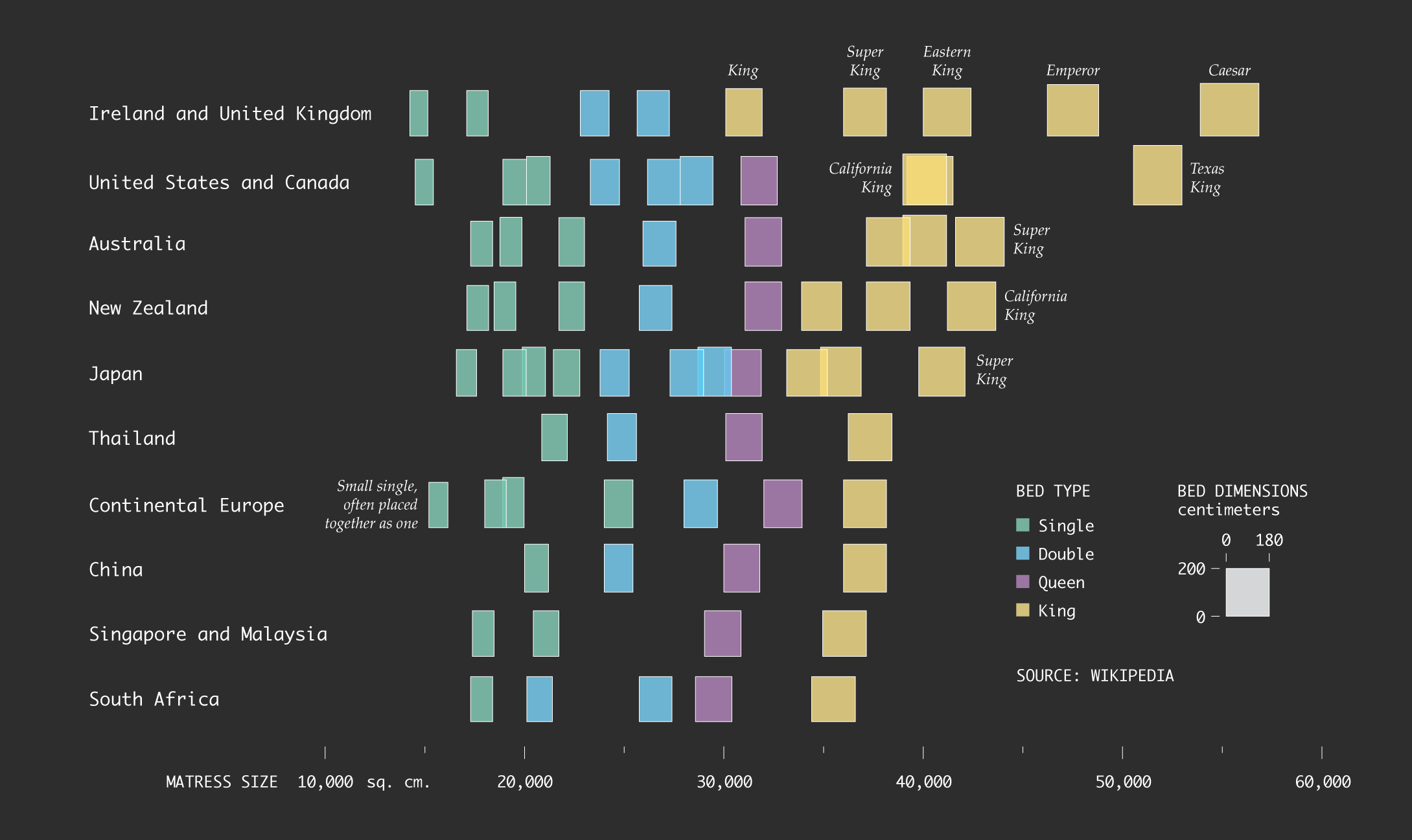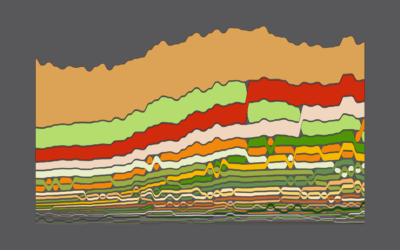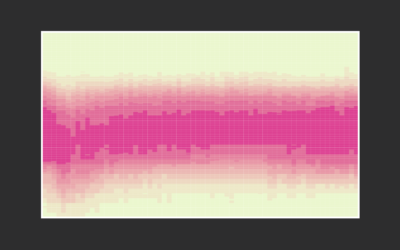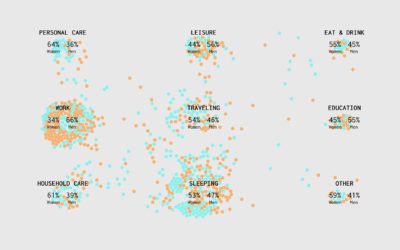Bed Sizes Around the World

When you book a hotel in the United States, you know what size bed you’re going to get, based on the description. But when you travel to other countries, the bed size in the place you visit is often different from what you’re used to, despite having a description as such.
In some places, a king bed is actually smaller than a queen bed here, or a twin/single bed might seem more like a double.
Wikipedia has a non-comprehensive list of bed sizes in different parts of the world. Here’s a visual look at the variations.
 Drawing Squares and Rectangles in R
Drawing Squares and Rectangles in R
Roll your own rectangular-shaped charts.
Become a member. Support an independent site. Make great charts.
See What You Get




